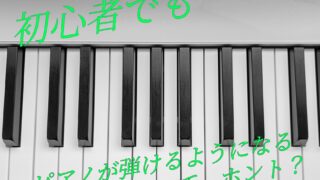TOEFL ibt リーディングテストのスコアを改善するには…
自分も、リーディング問題に苦戦したことがありますが、
一番の対策は、多読をすること。
このシリーズでは、リーディング対策用の設問も合わせて
様々なトピックでリーディング練習が出来るようにしております。
ぜひ、活用して、自身のスコアアップを目指して下さい。
本文
Title: The Evolution of Modern Art: A Journey Through Artistic Movements
Art is a reflection of human creativity and expression that has evolved over centuries. From the Renaissance to contemporary art movements, the world has witnessed a rich tapestry of artistic styles and techniques. This passage explores the evolution of modern art, focusing on key artistic movements that have shaped the landscape of the art world.
The Renaissance marked a significant turning point in the history of art. Artists during this period, such as Leonardo da Vinci and Michelangelo, emphasized realism, perspective, and anatomical accuracy. The revival of classical ideals and the exploration of human emotion through art laid the foundation for subsequent artistic movements.
Impressionism emerged in the late 19th century as a response to the rigidity of academic art. Artists like Claude Monet and Pierre-Auguste Renoir sought to capture the fleeting effects of light and atmosphere in their paintings. Impressionist works were characterized by loose brushwork, vibrant colors, and an emphasis on capturing the essence of a moment.
The early 20th century witnessed the birth of Cubism, a revolutionary art movement led by Pablo Picasso and Georges Braque. Cubist artists rejected the notion of representing objects from a single viewpoint and instead depicted subjects from multiple perspectives simultaneously. This fragmented approach challenged traditional notions of representation and paved the way for abstraction.
Surrealism emerged as a response to the rationality and orderliness of society in the aftermath of World War I. Artists like Salvador Dalí and René Magritte explored the realm of the subconscious, creating dreamlike and often bizarre imagery. Surrealist works often combined realistic elements with fantastical and symbolic elements, blurring the boundaries between reality and imagination.
Abstract Expressionism emerged in the mid-20th century as a powerful reaction to the turmoil of World War II. Artists like Jackson Pollock and Willem de Kooning embraced gestural and non-representational forms of expression. Abstract Expressionist works conveyed emotional intensity through dynamic brushwork, drips, and splatters of paint.
Pop Art emerged in the 1950s and 1960s as a response to the commercialization and mass media influence on society. Artists like Andy Warhol and Roy Lichtenstein incorporated popular culture references, consumer products, and images from advertising into their artwork. Pop Art challenged traditional notions of high art and celebrated the aesthetics of popular culture.
設問
Questions:
- Which artistic movement emphasized realism, perspective, and anatomical accuracy?
A. Renaissance
B. Impressionism
C. Cubism
D. Surrealism - What characterized Impressionist works?
A. Tight brushwork and muted colors
B. Geometric shapes and abstract forms
C. Loose brushwork and vibrant colors
D. Dreamlike imagery and bizarre subjects - Who were the key artists of Cubism?
A. Claude Monet and Pierre-Auguste Renoir
B. Pablo Picasso and Georges Braque
C. Salvador Dalí and René Magritte
D. Jackson Pollock and Willem de Kooning - Which artistic movement explored the realm of the subconscious and created dreamlike imagery?
A. Renaissance
B. Cubism
C. Surrealism
D. Abstract Expressionism - What characterized Abstract Expressionist works?
A. Realistic representation and meticulous details
B. Multiple perspectives and fragmented forms
C. Dynamic brushwork and splatters of paint
D. Popular culture references and consumer products - Which artistic movement incorporated popular culture references and images from advertising?
A. Renaissance
B. Impressionism
C. Pop Art
D. Surrealism - Who were prominent artists of Pop Art?
A. Andy Warhol and Roy Lichtenstein
B. Leonardo da Vinci and Michelangelo
C. Claude Monet and Pierre-Auguste Renoir
D. Jackson Pollock and Willem de Kooning - Which artistic movement challenged traditional notions of representation and depicted subjects from multiple perspectives simultaneously?
A. Cubism
B. Surrealism
C. Abstract Expressionism
D. Pop Art - Which artistic movement emerged as a response to the commercialization and mass media influence on society?
A. Renaissance
B. Impressionism
C. Abstract Expressionism
D. Pop Art - What was a common characteristic of Surrealist works?
A. Realistic elements combined with fantastical and symbolic elements
B. Multiple perspectives and fragmented forms
C. Dynamic brushwork and splatters of paint
D. Popular culture references and consumer products
解答・解説
- Answer: A. Renaissance
解説: ルネサンスでは、レオナルド・ダ・ヴィンチやミケランジェロなどの芸術家が写実主義、透視図法、解剖学的な正確さを強調しました。この時期の芸術は、古典的な理想の復活と芸術を通じた人間の感情の探求を重視しました。 - Answer: C. Loose brushwork and vibrant colors
解説: インプレッショニズムの作品は、緩やかな筆使い、鮮やかな色彩、瞬間の本質を捉えることに重点が置かれていました。 - Answer: B. Pablo Picasso and Georges Braque
解説: キュビスムの主要な芸術家はパブロ・ピカソとジョルジュ・ブラックでした。キュビスムの芸術家たちは、物体を単一の視点から描くという概念を拒絶し、複数の視点から被写体を同時に描写しました。 - Answer: C. Surrealism
解説: シュルレアリスムは第一次世界大戦の後、社会の合理性と秩序に対する反応として登場しました。サルバドール・ダリやレネ・マグリットなどの芸術家たちは、無意識の領域を探求し、夢のようでしばしば奇妙なイメージを作り出しました。 - Answer: C. Dynamic brushwork and splatters of paint
解説: 抽象表現主義の作品は、ダイナミックな筆使いやペイントの飛沫を通じて感情の強さを伝えました。具象的な形態ではなく、ジェスチャルで具体性のない表現を重視しました。 - Answer: C. Pop Art
解説: ポップアートは1950年代から1960年代にかけて、商業化や大衆メディアの影響に対する反応として登場しました。アンディ・ウォーホルやロイ・リキテンスタインなどの芸術家は、ポップカルチャーの要素や広告からのイメージを作品に取り入れました。 - Answer: A. Andy Warhol and Roy Lichtenstein
解説: ポップアートの代表的な芸術家はアンディ・ウォーホルとロイ・リキテンスタインです。彼らは人気文化の要素、消費財、広告のイメージをアート作品に取り入れました。 - Answer: A. Cubism
解説: キュビスムは従来の表現方法に挑戦し、被写体を複数の視点から描写することを特徴としていました。 - Answer: D. Pop Art
解説: ポップアートは商業化と大衆メディアの影響に対する反応として登場しました。 - Answer: A. Realistic elements combined with fantastical and symbolic elements
解説: シュルレアリスムの作品は現実的な要素と幻想的で象徴的な要素を組み合わせたものが一般的でした。それにより現実と想像力の境界が曖昧になりました。
本文の日本語訳
タイトル:現代美術の進化:芸術運動の旅
美術は、数世紀にわたって進化してきた人間の創造性と表現の反映です。ルネサンスから現代の美術運動まで、世界は美術のスタイルと技法の豊かな織りなす物語を目撃してきました。この文章では、美術の進化を探求し、美術界の風景を形作った主要な芸術運動に焦点を当てます。
ルネサンスは美術の歴史における重要な転換点となりました。レオナルド・ダ・ヴィンチやミケランジェロなどのアーティストは、リアリズム、透視法、解剖学的正確さを強調しました。古典的理想の復活と、芸術を通じた人間の感情の探求が、後続の芸術運動の基礎を築きました。
印象派は19世紀末に学術的な美術の硬直に対する反応として登場しました。クロード・モネやピエール=オーギュスト・ルノワールなどのアーティストは、絵画における光と大気のつかの間の効果を捉えようとしました。印象派の作品は、緩い筆触、鮮やかな色彩、瞬間の本質を捉えることに重点を置いていました。
20世紀初頭にはキュビスムという画期的な芸術運動が誕生しました。パブロ・ピカソやジョルジュ・ブラックによって主導されたキュビストのアーティストたちは、物体を単一の視点から描くという概念を拒否し、複数の視点から被写体を同時に描きました。この分断的な手法は伝統的な表現の概念に挑戦し、抽象化の道を開きました。
シュルレアリスムは第一次世界大戦後の合理性と秩序に対する反応として登場しました。サルバドール・ダリやレネ・マグリットなどのアーティストは、無意識の領域を探求し、夢のようでしばしば奇妙なイメージを作り出しました。シュルレアリストの作品はしばしば現実的な要素と幻想的で象徴的な要素を組み合わせ、現実と想像の境界をぼかしました。
抽象表現主義は第二次世界大戦の混乱に対する強力な反応として20世紀中盤に登場しました。ジャクソン・ポロックやウィレム・デ・クーニングなどのアーティストは、ジェスチャーと非具象的な表現の形式を受け入れました。抽象表現主義の作品は、ダイナミックな筆触、ペイントの滴りや飛沫を通じて感情の強度を伝えました。
ポップアートは1950年代から1960年代にかけて、商業化とマスメディアの影響に対する反応として登場しました。アンディ・ウォーホルやロイ・リキテンスタインなどのアーティストは、ポップカルチャーのリファレンス、消費者製品、広告のイメージを自身の作品に取り入れました。ポップアートは伝統的な高尚な芸術の概念に挑戦し、大衆文化の美学を称賛しました。
次の問題
[広告]
確かな英語力は、日々の継続から。
その継続を後押しする、第二言語習得理論に基づいた
オンライン英語学習プログラムがあります。
英語を使う人のための、確実なスキルアップが望める
7日間の無料体験はこちらから!

TOEFL ibt ライティング対策も、
あるテクノロジーを活用すれば、一発解決!
自分1人でも、ライティングは対策出来る時代に。
英会話を始めてみたいけれど、どのサービスが良いか分からない…
そんな方は、まず、この記事で3つのサービスを比べてみてはいかがでしょうか?
英語力を効率良く伸ばすことができるサービス3選です。


-320x180.jpg)

-320x180.jpg)

-320x180.jpg)
-320x180.jpg)

-320x180.jpg)



-120x68.jpg)

コメント